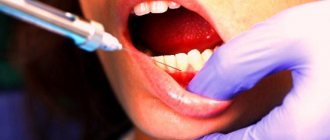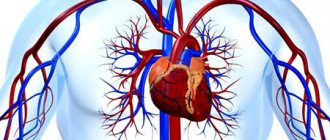Dental restoration is another popular niche in dentistry, which allows you to continue the life of a badly damaged natural tooth without prosthetics (and sometimes together with it). For this purpose, a pin is used - a special rod, which will be a new support for the destroyed tooth, and a complex tooth is built on it.
Tooth extension onto a pin
In most dental clinics, in the list of services you can find the column “Tooth restoration by extension (pin).” This procedure copes well with such tasks as correcting bites and correcting aesthetic tooth defects. Extension is a popular service, which is sometimes equated to artistic restoration.
Pins for teeth extension
In what cases is extension indicated?
The situation when a patient comes to the doctor and asks to have his tooth augmented, and the doctor just throws up his hands and recommends taking up prosthetics, is not uncommon. Patients, of course, are not professionals to independently determine what solutions exist for this or that dental problem. In reality, attaching a tooth to a pin is not a panacea, and it is indicated in a limited number of cases.
When is tooth augmentation recommended:
- chips and various cracks of teeth;
- various types of enamel damage;
- worn enamel;
- trauma with subsequent violation of the integrity of the bone tissue itself;
- greatly altered enamel color that cannot be changed by bleaching or cleaning;
- loss of a significant part of the tooth due to caries.
If the tooth is significantly damaged, it can be built up using a pin.
3 parapulp pins are installed in the root of the tooth
Of course, there are cases when restoring a tooth by building it onto a pin has contraindications. If the patient has an allergic reaction to one or another filling material, extensions are not performed. It happens that it is impossible to protect a certain area of the oral cavity from moisture, then it is also impossible to do artistic restoration, because the composite simply cannot dry out and, naturally, will not be fixed.
A direct contraindication is bruxism. This is what is called night grinding of teeth during sleep. Very often, it is precisely because of bruxism that cracks appear on tooth enamel, and if these cracks are removed by extension, then teeth grinding will lead to the destruction of an already restored tooth. But bruxism can be cured, the main thing is to consult a doctor in time.
Bruxism is a contraindication to attaching teeth to pins. In the photo there is a mouth guard against tooth abrasion
Pins should not be placed in children's teeth. It is not advisable to restore a tooth in this way if it (or neighboring teeth) has untreated caries. Of course, the general condition of the body is also taken into account: if the patient, for example, has a cold, his blood pressure has risen, his temperature has risen, the visit to the dentist should be postponed.
Children do not have teeth built up on pins
How teeth are ground down for veneers
The process of installing veneers consists of several stages. The first of these is diagnosis and development of a treatment plan. Preparing teeth for veneers begins with sanitation of the oral cavity. It is important to treat all teeth and remove plaque.
Next, the dentist selects the color. To do this, use a special scale, which allows you to choose from 20 shades
. Only after this comes the turn of turning.
Many people are afraid not of the preparation process itself, but of the pain involved. In fact, the procedure is painless
, it is performed under local anesthesia.
Grinding of teeth before veneers is carried out in a certain sequence:
- determination of enamel thickness for removal;
- grinding off the enamel from the front surface so as to leave a layer of it;
- design of a ledge at the gum;
- grinding the side surfaces;
- cutting edge processing.
The number of stages directly depends on the condition of the teeth. If the cutting edge is smooth and well preserved, then only the front (vestibular) surface is polished.
If the edge of a tooth is damaged as a result of caries, trauma or pathological wear of teeth, then it must be processed, smoothed and given the desired shape.
The depth of grinding for veneers depends on its thickness. For ultra-thin ones, about 0.2 mm
, for ceramic –
0.7 mm
, but can reach
up to 1.5 mm
. If the enamel layer is thin, then after grinding for veneers, the teeth are covered with glass ionomer cement to protect the dentin.
The dentist removes the main part of the enamel with a coarse diamond drill, and treats the edges with a fine-grained nozzle.
It is very important to leave the enamel layer intact. The fact is that the structure of dentin is such that dental cement (adhesive) does not adhere well to it. The onlays attached to the dentin will quickly fall off. The presence of an enamel layer means many years of operation.
Why does a tooth hurt after installing a pin?
Of course, pain in the area of the treated tooth is by no means a necessary phenomenon. But no one is safe from it, so you should be prepared for such unpleasant moments. Do not be afraid if for some time, literally a couple of hours after a visit to the doctor, the tooth begins to sag, as do the gums. However, during treatment, the tissues of the tooth and gums are affected; they are somehow, within the permissible limits, injured. Therefore, tolerable pain that does not last for several days is quite possible, there is nothing terrible about it.
After restoration, teeth may hurt a little
You can drink a packet of Nimesil, which will relieve discomfort.
Nimesil
If the pulp was removed during dental procedures, the pain may last for several days. Over time she will calm down. If nothing has changed, rush to the doctor. Prolonged pain may also indicate an allergic reaction to the material, which is also possible, and this also requires an early visit to the clinic.
How to avoid complications
The skill of the dentist plays a huge role when installing veneers. If the doctor, through negligence, reaches the dentin, this already threatens poor adhesion (adhesion). And if it touches the pulp, the result can be very sad: acute or chronic pulpitis, secondary caries. Therefore, the dentist must follow certain rules when preparing teeth for veneers:
- Interrupt preparation regularly to check
- Use air-water cooling
- Obey speed limits
- Carry out gum retraction (a thread is inserted under the gingival margin to avoid damage)
The strength of adhesion depends on how the teeth are ground down for veneers, but leaving too thick a layer of enamel is also not good. The pad will protrude and the edge seal will not provide protection against micro-leakage. This will lead to bacterial growth, caries and inflammation.
After the preparation, the dentist makes an impression of the jaws and places temporary veneers
. They are made of acrylic plastic, they are quite fragile, and most importantly, they are not put on each tooth separately, but represent a one-piece structure.
The doctor transfers the impressions to the laboratory, where the technician, using one of 3 available technologies, makes individual onlays. They exactly repeat the anatomy of the tooth, and look like natural enamel.
After fitting, the doctor fixes the pads. To do this, he dries the surfaces, treats them with acid, and etches both the tooth and the veneer. Then the adhesive is applied and the plate is secured to the tooth. It is not painful to insert the plates, the discomfort is only from the position with the mouth open.
Permanent veneers
After this, the patient’s area of responsibility begins. Veneers are strong but thin. Therefore, you need to be careful and avoid traumatic situations:
- do not chew nuts and seeds;
- do not bite the threads;
- Do contact sports while wearing a mouth guard.
Otherwise, caring for veneers is the most common: daily brushing, flossing, regular professional cleaning and preventive examinations every six months.
What is included in the cost of the tooth extension procedure?
A special issue is the cost of a particular dental procedure. Many patients wonder why the price of extensions is so high. But if you are provided with a whole range of services: with x-ray diagnostics, initial consultation, then there is nothing to be surprised at.
The cost of tooth extension on a pin includes:
- initial examination by a doctor, consultation with a specialist;
- X-ray diagnostics;
- computer modeling of the crown part of the tooth (this procedure is not always combined);
- cleaning the remains of the coronal part, as well as preparing it for installation of the pin;
- preparation of the root canal itself;
- antiseptic preparation of the hole;
- strong fixation of the pin;
- restoration of the crown part of the tooth - extension;
- surface finishing;
- diagnostics of the strength of the resulting structure;
- additional procedures.
The last point involves professional cleaning of all teeth and removal of dental plaque. Sometimes the tooth needs another adjustment if the patient himself complains of inconvenience. On average, restoring a damaged tooth by attaching it to a pin will cost the patient 2.5-3.5 thousand rubles.
Restoration of anterior teeth
Contraindications
In some cases, the pin design is contraindicated. The possibility of installing pins for dental prosthetics is determined by the doctor after studying the medical history, conducting an examination of the damaged tooth and assessing the condition of the oral cavity.
In most cases, inflammatory processes in the oral cavity immediately become an obstacle to placing a pin. In this case, pin structures are installed after treatment.
Direct contraindications to the installation of pins are:
- absence of a tooth crown in the frontal part;
- narrowness of the root canals: width less than two millimeters;
- impossibility of giving a cylindrical shape to the root canal;
- insufficient root height;
- the presence of cysts and granulomas in the oral cavity;
- blood clotting disorders, including during menstruation in women;
- pregnancy;
- mental disorders;
- any dental diseases of an inflammatory nature in the acute stage;
- complete destruction of the tooth crown.
Are there any disadvantages to the extension procedure?
Of course, no dental procedure is without its downsides. And although extensions on a pin offer great opportunities for restoring damaged teeth, it also has its drawbacks. For example, in rare cases, installing a pin further destroys the tooth. If the doctor makes a mistake in treatment, caries may develop. Finally, the metal raw material for the rod can be damaged by corrosion.
- Tooth root extension
Sometimes pins destroy teeth even more
In some cases, in order to subsequently remove the pin, the entire tooth must be removed. An allergic reaction is another potential disadvantage of the procedure. And, what is most likely, after a certain period of time (depending on your luck), the walls of the tooth become thinner and it collapses. That is, a pin is not a guarantee that the tooth will always be in this form, and no further treatment or prosthetics will be required.
After restoration, teeth will still have to be treated or removed someday
A few words about false advertising
Probably, each of you has come across advertisements about a 100% guarantee on dental implantation or about the lifetime service of dentures and crowns. The authors of such advertising are infinitely far from real dentistry. There simply cannot be any eternal guarantee, if only because no surgeon can guarantee this. No matter how hard the specialist tries, the decisive factor in the durability of the structure will still be the actual condition of the patient’s body.
A lifetime guarantee is indeed given, but not for the fact that the implant will not be rejected by the body, but only for its mechanical integrity.
Is extension on a pin promising?
Of course, it is impossible to call the tooth extension procedure unpromising. This technique is constantly being improved, new technologies are being proposed that impress with their minimal trauma and safety for the patient. This relatively new practice is the installation of fiberglass pins.
Design of fiberglass pins "Rebilda Post" and pins from Russian manufacturers
Creating the final root canal configuration using a calibration drill
Calibration drill versus reamer
After processing the channel with a calibration drill
Silanization of the pin
Application of Futurabond DC adhesive using microbrushes
Restoration of the crown part of the tooth
Fiberglass pins are distinguished by their special plasticity, and this is really important, because the process of splitting the tooth root must be prevented, and the elasticity of the tooth contributes to this. Most often, fiberglass pins are installed in chewing teeth, since they bear the main, cantilever loads during food intake.
RelyX™ Fiber Post
The patient has the right to find out which pin will be installed, what determines the doctor’s choice, and how the extension procedure will take place. The doctor warns the patient about possible complications and talks about what needs to be done to prevent these complications from occurring.
Successful treatment!
What determines the success of implantation and the long service life of the implant?
Unfortunately, it often happens that after successful implantation of a titanium implant and installation of a crown on it, the patient shows excessive self-confidence and begins to violate the recommendations of the dental surgeon. The most common mistake is a careless attitude to oral hygiene. Many people believe that microorganisms cannot settle on a denture, which means that artificial teeth cannot be cleaned as thoroughly as natural ones.
In fact, this is not entirely true. Indeed, artificial crowns are not susceptible to caries, but deposits form on them. They contain bacteria that cause inflammation of the gums near the inserted tooth. This is what can cause the titanium rod to be rejected.
In general, the success of implantation and the durability of the entire structure depend both on the skill of the surgeon and on the patient himself and his state of health.
What are pin structures?
According to their shape, the pins are divided into:
- Screw;
- Cylindrical;
- Cylindrical-conical;
- Conical.
By fixation method:
- Using a special solution;
- The core base is strengthened in dentin.
Main types of structures:
- Anchor. The reliable fixing element is made of titanium alloy.
- Fiberglass. Durable but flexible. Resistant to corrosion. They do not show through the tooth. Hypoallergenic and safe.
- Carbon fiber. Distributes loads evenly. Minimizes pressure on the root.
Individual models are considered the most reliable. They are developed taking into account the characteristics of the patient’s dental cavity.









